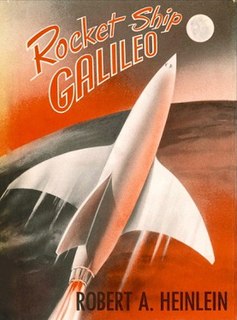
Rocket Ship Galileo, a juvenile science-fiction novel by the American writer Robert A. Heinlein, published in 1947, features three teenagers who participate in a pioneering flight to the Moon. It was the first in the Heinlein juveniles, a long and successful series of science-fiction novels published by Scribner's. Heinlein originally envisioned the novel as the first of a series of books called "Young Rocket Engineers". Publishers initially rejected the script, judging going to the moon as "too far out".

The Moon Is a Harsh Mistress is a 1966 science fiction novel by American writer Robert A. Heinlein about a lunar colony's revolt against absentee rule from Earth. The novel illustrates and discusses libertarian ideals. It is respected for its credible presentation of a comprehensively imagined future human society on both the Earth and the Moon.
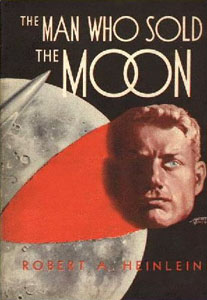
"The Man Who Sold the Moon" is a science fiction novella by American author Robert A. Heinlein, written in 1949 and published in 1950. A part of his Future History and prequel to "Requiem", it covers events around a fictional first Moon landing in 1978 and the schemes of Delos D. Harriman, a businessman who is determined to personally reach and control the Moon.
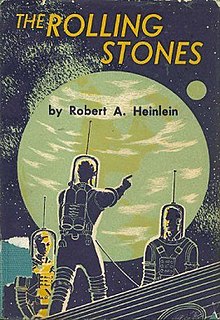
The Rolling Stones is a 1952 science fiction novel by American writer Robert A. Heinlein.

Luna 1, also known as Mechta, E-1 No.4 and First Lunar Rover, was the first spacecraft to reach the vicinity of Earth's Moon, and the first spacecraft to be placed in heliocentric orbit. Intended as an impactor, Luna 1 was launched as part of the Soviet Luna programme in 1959.
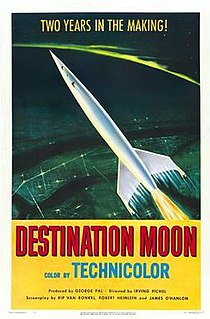
Destination Moon is a 1950 American Technicolor science fiction film, independently produced by George Pal and directed by Irving Pichel, that stars John Archer, Warner Anderson, Tom Powers, and Dick Wesson. The film was distributed in the United States and the United Kingdom by Eagle-Lion Classics.

A Moon landing is the arrival of a spacecraft on the surface of the Moon. This includes both crewed and robotic missions. The first human-made object to touch the Moon was the Soviet Union's Luna 2, on 13 September 1959.

The Moon has appeared in fiction as a setting since at least classical antiquity. Throughout most of literary history, a significant portion of works depicting lunar voyages has been satirical in nature. From the late 1800s onwards, science fiction has successively focused largely on the themes of life on the Moon, first Moon landings, and lunar colonization.

Islands in the Sky is a 1952 science fiction novel by British writer Arthur C. Clarke. It is one of his earliest works. Clarke wrote the story as a travelogue of human settlement of cislunar space in the last half of the twenty-first century.
The Heinlein juveniles are the science fiction novels written by Robert A. Heinlein for Scribner's young-adult line. Each features "a young male protagonist entering the adult world of conflict, decisions, and responsibilities." Together they tell a loosely-connected story of space exploration. Scribner's published the first twelve between 1947 and 1958, but rejected the thirteenth, Starship Troopers. That one was instead published by Putnam. A fourteenth novel, Podkayne of Mars, is sometimes listed as a "Heinlein juvenile", although Heinlein himself did not consider it to be one.
"Venture to the Moon" is a group of six linked science fiction short stories by English writer Arthur C. Clarke. It was originally published in the British newspaper Evening Standard in 1956. The stories describe the first crewed mission to the Moon in 1975, as a joint American-Russian-British mission, and are narrated in first person from the point of view of the British team commander. Despite the death described in the third story, they are written in a humorous vein. They are collected in The Other Side of the Sky.

Moon of Mutiny is a juvenile Science fiction novel by author Lester del Rey published in 1961 by Holt, Rinehart & Winston as the final part of the Jim Stanley Series. The story takes place mostly on the Moon following the adventures of the main character Fred Halpern after he is expelled from Goddard Space Academy for insubordination, and tries to find his way back into space.
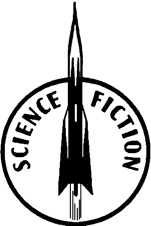
Winston Science Fiction was a series of 37 American juvenile science fiction books published by the John C. Winston Company of Philadelphia from 1952 to 1960 and by its successor Holt, Rinehart & Winston in 1960 and 1961. It included 35 novels by various writers, including many who became famous in the SF field, such as Poul Anderson, Arthur C. Clarke, Ben Bova, and Lester del Rey. There was also one anthology, The Year After Tomorrow, edited by del Rey and others. There was one non-fiction book Rockets Through Space: The Story of Man's Preparations to Explore the Universe by del Rey which details the factual science and technology of rocket flight. Many of the dust jackets became science fiction classics; the artists included Hugo Award winners Ed Emshwiller and Virgil Finlay along with Hugo nominees such as Mel Hunter and Alex Schomburg.

Missing Men of Saturn is a juvenile science fiction novel, published first in 1953, by astronomer and author Robert S. Richardson with cover illustration by Alex Schomburg. The story concerns Dale Sutton's mission to the dreaded planet Saturn from which no one has ever returned. Missing Men of Saturn is a part of the Winston Science Fiction set, a series of juvenile novels which have become famous for their influence on young science fiction readers and their exceptional cover illustrations by award-winning artists.
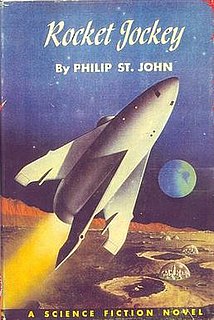
Rocket Jockey is a juvenile science fiction novel by Philip St. John with cover illustration by Alex Schomburg. The story follows the heroic efforts of young man Jerry Blaine in his efforts to win the famous rocket race, the Armstrong Classic. Rocket Jockey is a part of the Winston Science Fiction set, a series of juvenile novels which have become famous for their influence on young science fiction readers and their exceptional cover illustrations by award-winning artists.
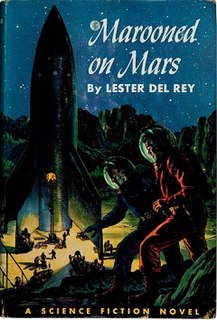
Marooned on Mars is a juvenile science fiction novel written by American writer Lester del Rey. It was published by John C. Winston Co. in 1952 with illustrations by Alex Schomburg.

The Mars Project is a 1952 non-fiction scientific book by the German rocket physicist, astronautics engineer and space architect, Wernher von Braun. It was translated from the original German by Henry J. White and first published in English by the University of Illinois Press in 1953.
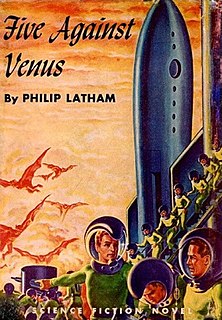
Five Against Venus, written by Philip Latham, is a science-fiction novel first published in the United States in 1952 by the John C. Winston Company. Philip Latham was the nom de plume of Robert S. Richardson, a professional astronomer who also provided technical assistance on movies such as Destination Moon and wrote scripts for the Captain Video television series.

The Secret of the Ninth Planet is a science-fiction novel written by Donald A. Wollheim and first published in the United States in 1959 by the John C. Winston Co. Wollheim takes his heroes on a grand tour of the Solar System as that team struggles to prevent an alien force from blowing up the Sun. This is the last of three juvenile novels that Wollheim wrote for Winston, the other two being The Secret of Saturn's Rings and The Secret of the Martian Moons.

















